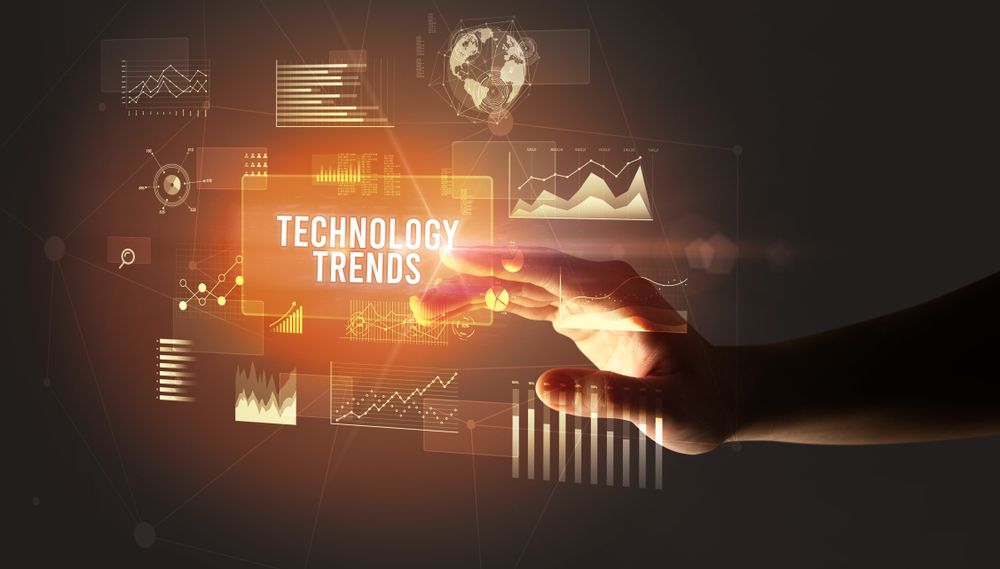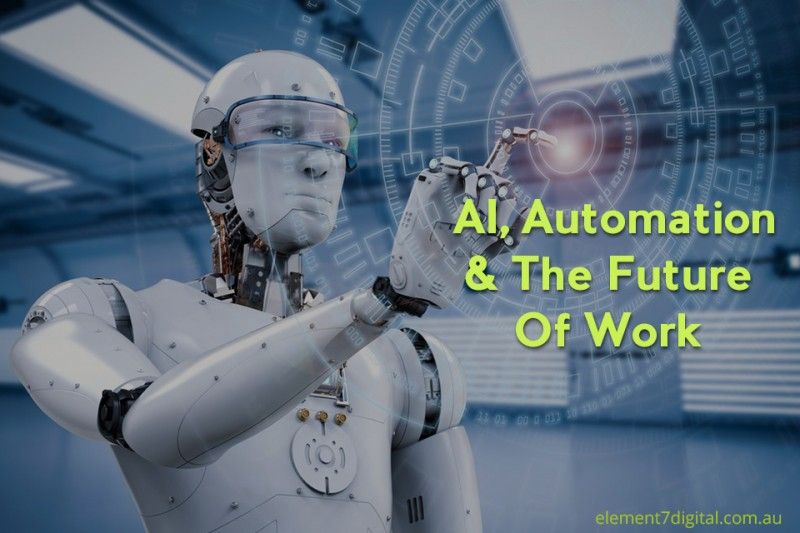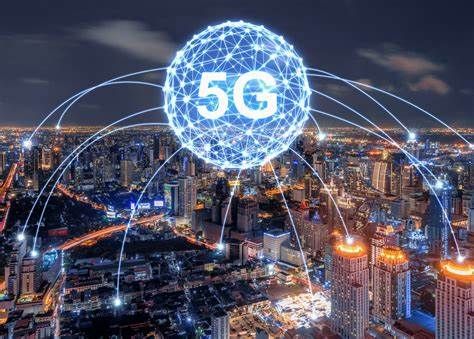While conversational AI and green tech dominated the tech space in 2023, what will be the trending technology advancements in 2024 that are going to shape the future of the global economy?

The rapid evolution of technology holds the promise of fostering collective well-being and innovative solutions for global issues. However, the unprecedented speed of this transformation poses a risk of overpowering the existing institutions, creating vulnerability for the overall humanity to unmanaged threats, further intensified by geopolitical upheavals, escalating polarisation, and the imminent challenges associated with climate change.
“The human society has progressed more in the past five decades than it had progressed during 200 years earlier than that. This has also created dynamics in geo-politics
In such a scenario, it is imperative that global leaders and organisations direct this technological revolution towards positive ends. Here are some of the developments that businesses should be prepared for in the year ahead.
Blockchain trends in 2024
In 2024, the blockchain landscape is defined by five prominent trends, each contributing to the evolving dynamics of this revolutionary technology. Decentralised Finance (DeFi) stands out as a frontrunner, transforming traditional financial systems through blockchain. Real-world platforms like Compound Finance and Aave exemplify the potential of DeFi by offering decentralised lending and borrowing services, allowing users to earn interest on cryptocurrencies without the need for traditional banks.
Enterprise Blockchain adoption is another significant trend, as major corporations recognise the value of blockchain in enhancing transparency and efficiency. IBM’s Food Trust Network is a practical example, leveraging blockchain to trace the origin and journey of food products, ensuring food safety and supply chain integrity.
The rise of Central Bank Digital Currencies (CBDCs) is reshaping the financial landscape, with countries like China leading the way by piloting the digital yuan, a government-backed digital currency utilising blockchain technology to enable secure and traceable transactions.
Enhanced blockchain education is a critical trend, reflecting the industry’s commitment to fostering a skilled workforce. Initiatives like ConsenSys Academy provide comprehensive blockchain courses, empowering professionals to navigate and contribute to the blockchain ecosystem effectively.
The integration of Artificial Intelligence (AI) with blockchain is also gaining prominence, enhancing security, scalability, and functionality.For instance, Fetch.ai, which utilises AI algorithms to optimise blockchain consensus mechanisms, improving overall network performance.
“Blockchain-AI convergence is a key factor for the present and future of technology as both these emerging and foundation technologies deal with data, value storage and creation. On one hand, Blockchain builds a foundational encryption architecture that enables secure digital storage and sharing, rewarding with data or anything of value. AI, on the other hand, creates a foundational direction to gather, analyze, generate and predict insights from data which generates, predicts and manages value. These two (out of many) areas of blockchain and AI have to be combined to create solutions, scaled technology and business infrastructure”, says Dinis Guarda, Founder and CEO of ztudium, makers of 4IR and immersive technologies for Web 3.0.
How will Generative AI and everyday automation evolve in 2024?
The rise of “Bring Your Own” AI (BYO AI) in the workplace is expected, with approximately 60% of workers projected to utilise their own AI tools for substantial job functions. This democratisation of AI is poised to enhance workforce agility, freeing up human capabilities for more complex tasks. However, effective implementation necessitates fostering a data-literate culture within organisations, ensuring proficient interaction with AI tools and addressing potential security and privacy concerns.
AI-driven software development is rapidly evolving, with generative AI and Turing bots significantly boosting developer productivity by up to 30%. This transformative shift not only accelerates existing workflows but revolutionises the entire software conception and design process. Further, the integration of generative AI in Industry 5.0 emphasises collaborative automation, promoting human-centric industrial environments with mass customisation efficiency and improved workplace safety.
In the HR sector, AI gets integrated in talent management, where 89% of enterprises are leveraging AI in their hiring processes. The caution lies in potential communication gaps and management errors, prompting the need for responsible AI management to balance risks and benefits in HR.

Generative AI is also playing a crucial role in meeting sustainability goals by optimising energy efficiency and resource management operations, aiding organisations in making informed and sustainable decisions.
“Artificial Intelligence is now playing a pivotal role in the development of our next stage of humanity as digital transformation plays its role in everything we do in society and in the bridge between physical and digital twins. This is the functioning augmented spatial computing world where we will evolve as Humans in an AI Xperience Metaverse.
As these set of technologies and tools evolve our human capacities will enable various capabilities that enhance our humans user experience, automates all our processes, and creates intelligent virtual physical environments. It creates also a new history where humans and its advanced new evolutionary machines will pay a new co-existence role”, says Dinis Guarda.
AI is also becoming integral to business operations, with emphasis on training and data literacy. Organisations are expected to invest in prompt engineering training to effectively communicate with AI tools, ensuring responsible leveraging of AI capabilities.
The Smart City trends in 2024
The evolution of smart mobility focuses on enhanced efficiency, resilience, and sustainability. Urban SDK, a US-based startup, employs real-time location analytics for efficient, safe, and sustainable mobility planning. BluSmart, an Indian startup, contributes to eco-conscious electric cab-sharing, reducing over 14,500 tonnes of CO2 emissions through 6.5 million environmentally-friendly rides.
Digital citizen initiatives aim to increase citizen engagement, community collaboration, and accessibility to healthcare and education. Diia mobile app by Ukrainian government provides digital Id cards that confirm Ukrainian citizenship, and provides the same legal power as paper- based documents. Waymap, a UK-based startup, offers inclusive navigation guidance for both indoor and outdoor settings, enhancing accessibility.
Advancements in digitalisation are enhancing public safety through technologies like Intelense’s AI-based solutions for traffic and security management. Brinc Drones, a US-based startup, pioneers innovative first response drone solutions for critical situations, aiding in firefighting, defense, and search & rescue missions.
Sustainable technologies in 2024
In 2024, sustainable technology trends are driving transformative changes across various sectors. Solar power integration takes the lead, with advancements making solar technology more accessible and cost-effective, from residential rooftops to large-scale industrial complexes. The focus on eco-friendly smart homes has intensified, incorporating energy-efficient appliances, smart thermostats, and automated systems that optimise energy consumption for a greener lifestyle.
Moreover, the tech industry is shifting towards a circular economy, particularly in electronics, with an emphasis on designing products that are easy to disassemble, repair, and recycle, reducing electronic waste. Fairphone, a Dutch company, has been a trailblazer in promoting sustainability and ethical practices in the smartphone industry. Their approach involves designing smartphones that prioritise longevity, repairability, and ethical sourcing of materials.
Green cloud computing is addressing the environmental impact of data centers, as tech giants invest in renewable energy sources and energy-efficient hardware. Google, a major player in the tech industry, has made substantial efforts to address the environmental impact of its data centers through green cloud computing practices.

The transportation sector is experiencing an electric revolution, with major automotive players introducing diverse electric vehicles, aligning with global efforts to reduce carbon emissions.
Sustainable agriculture technologies, including precision farming and AI crop monitoring, are contributing to resource optimisation and global food security. Water conservation technologies, utilising sensors and data analytics, are addressing the pressing issue of water scarcity.
How quantum technology transforms computing power in 2024?
Quantum technology has the potential to revolutionise computing power by solving complex problems at speeds and scales unimaginable with classical computers. Quantum computing utilises qubits, operating on the principles of quantum mechanics, enabling calculations exponentially faster than their classical counterparts.
From drug discovery to financial modeling, quantum computing’s early applications are already promising, with the potential to transform industries and unlock new realms of innovation.
D-Wave, a quantum computing company, collaborated with biotechnology firm 1QBit and pharmaceutical company Biogen to explore the potential of quantum computing in drug discovery. They used D-Wave’s quantum annealer to optimize molecular structures, providing insights into more efficient drug designs.
IBM recently debuted its ‘IBM Quantum Heron,’ the first in a new series of utility-scale quantum processors. While not exclusively focused on financial modeling, it demonstrated the potential of quantum computing for complex problem-solving.
“We are firmly within the era in which quantum computers are being used as a tool to explore new frontiers of science,” said Dario Gil, IBM SVP and Director of Research, at the launch. “As we continue to advance how quantum systems can scale and deliver value through modular architectures, we will further increase the quality of a utility-scale quantum technology stack – and put it into the hands of our users and partners who will push the boundaries of more complex problems.”
Financial institutions like JPMorgan Chase have been exploring quantum computing for risk analysis and trading strategies.
Internet of Behaviour: Connecting data with human behaviour
The Internet of Behavior (IoB) represents a dynamic convergence of data analytics and a profound understanding of human behavior, reshaping various industries, like healthcare, education, marketing, retail, and advertising, through its applications.
In healthcare, the IoB’s potential is exemplified by its capacity to harness data from sensors and wearables, facilitating the tracking of patient behavior and health metrics. This translates into tangible benefits such as the development of highly personalised treatment plans. Devices like smartwatches equipped with health sensors enable continuous data collection, empowering healthcare professionals to monitor patients in real-time. This real-time data, encompassing vital signs and activity levels, facilitates early detection of health anomalies and enables healthcare providers to intervene promptly, ultimately leading to improved patient outcomes.
In the realm of marketing and advertising, IoB’s impact is equally transformative. Through the seamless integration of data from various sources, including wearable devices and online interactions, marketers gain a comprehensive understanding of consumer behavior and preferences. This deeper insight allows for the creation of highly targeted and personalised campaigns. An illustrative example is the application of IoB in the retail sector.
Retailers can use data gathered from customers’ in-store movements, purchasing history, and online interactions to tailor marketing messages. For instance, a customer who frequently explores a particular product category online might receive targeted promotions for related items during their in-store visits.
Integration of Edge computing with AI
The collaboration between Edge Computing and Generative AI is positioned to play a transformative role in reshaping the technological landscape in 2024. Renowned for its ability to process real-time data at the edge, edge computing is poised for advancements that will impact sectors ranging from manufacturing to healthcare.
The emergence of multimodal AI systems, capable of processing various data types, is set to significantly broaden the versatility of AI, especially when leveraging the real-time processing capabilities offered by edge computing.
The democratisation of AI, facilitated by the accessibility of edge computing, is poised to result in more cost-effective tools, fostering widespread adoption across industries. Both technologies will prioritise responsible AI practices, emphasising transparent algorithms, global standards for equity and privacy, and resilience against adversarial and cyber threats.
Advancements in 5G networks in 2024
In terms of enhanced mobile connectivity, 5G offers speeds up to 100 times faster than its predecessor, 4G, ensuring rapid downloads, smooth streaming, and an overall improved mobile experience. This advancement significantly impacts applications such as video calls, gaming, and augmented reality.
5G is also set to revolutionise the Internet of Things (IoT) market with its low latency and high bandwidth. This support facilitates the growth of interconnected devices in smart homes, wearables, and other IoT applications, fostering automation and efficiency.
Beyond this, 5G’s real-time data transmission capabilities are poised to bring about notable advancements in healthcare, enabling remote surgeries, accurate diagnoses, and transformative changes in patient care and medical collaboration.

5G’s high-speed connectivity and low latency contribute to the evolution of autonomous vehicles, making transportation safer and more efficient, encompassing self-driving cars, delivery drones, and intelligent traffic systems. The ultra-fast speeds and low latency of 5G enhance virtual and augmented reality experiences, reshaping industries like gaming, education, and retail through these technologies.
Cybersecurity: Enabling cyber-resilience in 2024
In 2024, the cybersecurity landscape confronts persistent challenges and evolving trends. Ransomware remains a formidable threat, with groups becoming more sophisticated and diverse, exemplified by the MOVEit attack‘s emphasis on targeting vulnerabilities in third-party tools. The dynamic between CISOs and CIOs reveals misalignments in security policy creation and enforcement, prompting a call for automation projects, especially in cloud-first companies, to foster better alignment between these roles.
Artificial Intelligence (AI) and Generative AI (GenAI) play pivotal roles in shaping cybersecurity. The accessibility of AI leads to increased attacks on the cloud, while GenAI facilitates intelligent and personalised phishing campaigns through social engineering.
eepfake technology further complicates discerning real from manipulated content. Compliance and regulations, driven by SEC disclosure rules, shape the industry, emphasising the growing focus on corporate cybersecurity responsibility.
Quantum computing poses a significant threat to conventional encryption, necessitating the development of post-quantum cryptography. Collaboration between DevOps and DevSecOps intensifies, demanding closer cooperation with software engineers for early-stage security integration.
CISOs refine soft skills to effectively communicate financial and organisational risks to executive stakeholders in this ever-evolving cybersecurity landscape.
Biotechnology and CRISPR in 2024
Personalised medicine takes a spotlight, leveraging genetic knowledge to tailor treatments to individuals. Companies like 23andMe and AncestryDNA contribute to this trend by offering genetic testing services that not only unveil ancestral insights but also contribute valuable data to the realm of personalised medicine.
Concurrently, the integration of CRISPR and artificial intelligence is revolutionising diagnostics. Real-world applications, such as the CRISPR-based cancer diagnosis at the Biomedical Engineering division of UConn Health, showcase the power of CRISPR technology in enabling rapid and accurate early cancer diagnostics and infectious disease detection.
Machine learning and AI play a pivotal role in biotech breakthroughs, driving intelligent algorithms to analyse extensive datasets. Companies like Insilico Medicine, employ AI for drug discovery, streamlining the identification of potential compounds and optimising drug development processes.
Stem cell technology is making strides in regenerative medicine, utilising simulation and modeling tools for disease modeling and drug testing. Notably, induced pluripotent stem cells (iPSCs) are employed by organisations like the New York Stem Cell Foundation Research Institute to advance our understanding of diseases such as Alzheimer’s.
Tissue engineering and bioprinting take center stage, with companies like Organovo pioneering the creation of functional organs and tissues through bioprinting software, promising advancements in organ transplantation and personalised medicine. The transformative impact of big data is witnessed through platforms like Benchling, offering advanced data analytics and management solutions for collaborative research in life sciences.
The acceleration of drug research through cutting-edge software solutions, exemplified by companies like Atomwise utilising AI for virtual drug screening, marks a significant trend in 2024.
How Augmented Reality will enhance our perception of reality in 2024?
The outlook for Augmented Reality (AR) in 2024 is highly optimistic, offering substantial potential across diverse sectors like education, healthcare, gaming, and retail. Anticipated to bring about a transformative impact on numerous industries, AR’s future is shaped by ongoing technological advancements, including improved hardware, enhanced graphics, and seamless integration with Artificial Intelligence (AI), all of which contribute to its widespread adoption.
Despite the tremendous promise, it is imperative to confront challenges associated with privacy, content regulation, and accessibility as we navigate this exciting AR landscape. Adhering to careful planning and responsible development practices becomes crucial to ensuring that the benefits of AR are inclusive and accessible to everyone. As we venture into the future, 2024 holds the promise of a limitless scope for AR, presenting a vision where augmented reality seamlessly integrates into our daily lives through thoughtful and considerate advancements.
2024: A step further for better Human-Machine interactions
In 2024, we find ourselves at the forefront of a remarkable era marked by significant advancements in Human-Machine interactions. The synergy between humans and machines is poised to reach new heights, propelled by cutting-edge technologies and innovative approaches.
From natural language processing and gesture recognition to immersive virtual experiences, the landscape of Human-Machine interactions is expanding, offering more seamless and intuitive interfaces. As we step into this transformative year, the focus is not only on enhancing efficiency but also on fostering a deeper understanding between humans and machines. The goal is to create interfaces that are not only responsive but also empathetic, ushering in a future where technology becomes an even more integral and harmonious part of our daily lives.

Pallavi Singal is the Vice President of Content at ztudium, where she leads innovative content strategies and oversees the development of high-impact editorial initiatives. With a strong background in digital media and a passion for storytelling, Pallavi plays a pivotal role in scaling the content operations for ztudium’s platforms, including Businessabc, Citiesabc, and IntelligentHQ, Wisdomia.ai, MStores, and many others. Her expertise spans content creation, SEO, and digital marketing, driving engagement and growth across multiple channels. Pallavi’s work is characterised by a keen insight into emerging trends in business, technologies like AI, blockchain, metaverse and others, and society, making her a trusted voice in the industry.











